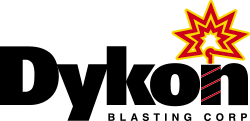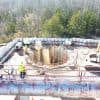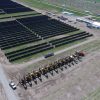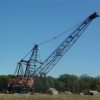PROJECT DETAILS
Dykon Blasting got a call at Sunday afternoon at 3:30 from Union Pacific Rail Road’s head bridge engineer. The railroad had a bridge pier fail on the Trinity River and they needed a contractor that could mobilize immediately to assist with the efforts to get the tracks back into production. Over 22 trains a day normally passed over the bridge so it was a major concern for the railroad to get freight moving again. Jared Redyke and David Hersey arrived onsite later that night to assess the situation.
After arriving it was discovered that one of the main concrete piers in the Trinity River had failed and was tilted severely. Dykon Blasting’s team quickly devised a plan to allow for the safe and timely removal of the damaged structures so that a new bridge could be built. Phase one called for the explosive severing of the overhead steel truss bridge section into several sections for easy removal. Dykon’s crew quickly went to work engineering the pre-weakening cuts needed to place the linear shape charges that would cut the steel. Once the steel section was dropped Dykon turned its attention to the damaged pier. The pier was still moving so conventional drilling equipment could not be placed on the pier. Dykon used a twin pipeline jumbo drill and modified it to be held with a 600 ton crane onsite in order to the drill the top section horizontally. Once the horizontal drilling was completed the upper section of the pier was loaded and blasted. Phase 3 involved modifying the drill to drill the bottom section. Time was of the essence so the railroad did not want Dykon to blast the lower section until the new bridge was installed and train traffic was restored. Dykon remobilized a few weeks later to complete the blasting underneath the active tracks.







